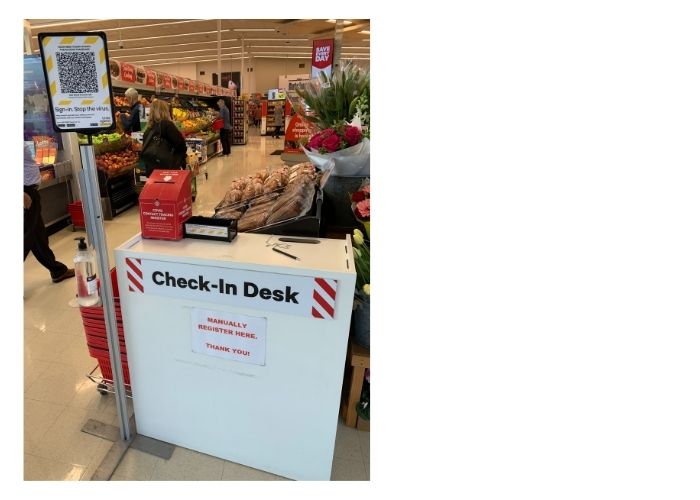Second installment of our new blog series that will bring front-row insights from our global network of IMRs focusing on COVID-19 recovery efforts in different markets. This installment is about Australia & New Zealand.
As international export markets begin recovering from the COVID-19 pandemic, it is important to stay up to date on how your target markets are doing in 2021.
In response to this need Food Export-Midwest and Food Export-Northeast have developed a new blog series that will bring you front-row insights from our network of In-Market Representatives (IMRs). Each blog will focus on one international market and give an overview of the recovery efforts in that market. This week’s spotlight is all about Australia and New Zealand.
This week’s spotlight is all about Australia and New Zealand. Learn about the changes that took place in these markets as a result of COVID-19 and practical tips that our In-Market Representative (IMR) for Australia and New Zealand, John Arnold, has to offer to U.S. exporters looking to enter or re-establish themselves in the market.

1. What is the situation in your market regarding pandemic recovery at present?
Both Australia and New Zealand have had, thankfully, fewer cases of COVID throughout the pandemic. Though there are occasional lockdowns in certain areas as outbreaks arise, there is more or less free movement within each country. However, both countries have closed their borders to international travel, other than a travel bubble between the two countries that started this spring.
In spite of the relatively low number of COVID cases, there was a significant impact to the economy initially. Since then both countries are recovering well with unemployment numbers improving and consumers are spending on domestic travel and other goods.
2. How is that playing out in the food sector? What are you seeing in the retail sector? foodservice sector?
The foodservice sector is in recovery mode. As restaurants re-opened, there was an increase in dining out but that has now plateaued. Having many office workers still working from home has a serious impact on inner-city cafés and restaurants which depend on their business. Some estimates are that 40% of office space in cities is empty. Periodic local lockdowns, limits on seating capacity and the heavy hygiene protocols also have inhibited recovery in the HRI sector.
The retail sector is performing very strongly, however, retailers are challenged with finding enough imported product to fill the market due to logistics delays. Being island nations, the impact of major disruptions to global shipping are amplified for us. For example, one key Australian importer’s order of container of a condiments from the US was expected in March, but is likely only to arrive in mid-July.
For manufacturers, the shipping delays have created difficulties with sourcing ingredients and packaging for their products. Refrigerated containers are even more challenging to secure at this time.

Covid tracing set-up at a grocery store called New World. New Zealanders are very diligent with COVID tracing procedures, with most people scanning the QR code at the entrance to stores, restaurants, etc. They also have the option to fill out a tracing form manually.
3. What trends or developments have you seen in your market during the pandemic that you think are most likely to continue into the recovery and post-recovery period?
A big consumer shift has been less dining out and more cooking at home. And with many businesses looking to reduce their office footprints, inner-city restaurants that depended on office workers will have a difficult path forward.
The move to digital ordering in restaurants is also likely to stay. When guests arrive, they access menus by scanning a QR code on the dining table rather than ordering from a paper menu.
There has also been increased interest in buying local and supporting local producers and food products with health and wellness attributes continue to be in strong demand.
4. Could you share some practical marketing tips for U.S. suppliers to best position themselves to take advantage of the trends/developments you identified above?
The current logistics issues may make it difficult for U.S. suppliers to enter the market right now. Importers do have less of an appetite for new products immediately but once the supply chain interruption has passed there will be great opportunity for products which are connected to health and wellness trends. Products such functional foods, organic and healthy snacking are in demand across Australia and New Zealand. Ingredients with those profiles will also have potential.
Want more information on the Australia and New Zealand markets?
See if our Virtual Consultations service is right for you!
Your Connection To Growth®
©2024 Food Export Association of the Midwest USA and Food Export USA–Northeast. All Rights Reserved.
Food Export–Midwest and Food Export–Northeast prohibits discrimination in all its programs and activities on the basis of race, color, national origin, religion, sex, gender identity (including gender expression), sexual orientation, disability, age, marital status, familial/parental status, income derived from a public assistance program, political beliefs, reprisal or retaliation for prior civil rights activity. (Not all bases apply to all programs.) Persons with disabilities who require reasonable accommodations or alternative means of communication for program information (e.g., Braille, large print, audiotape, American Sign Language, etc.) should contact us. Additionally, program information may be made available in languages other than English.
To file a program discrimination complaint, complete the USDA Program Discrimination Complaint Form, AD-3027, found online https://www.ascr.usda.gov/filing-program-discrimination-complaint-usda-customer.
Food Export–Midwest and Food Export–Northeast reserve the right to deny services to any firm or individual which, in the sole opinion of Food Export–Midwest and Food Export–Northeast, does not comply with FAS, MAP or Food Export–Midwest and Food Export–Northeast regulations or policies, or otherwise offer the best opportunity to achieve its mission of increasing food and agricultural exports. Submission of any false or misleading information may be grounds for rejection or subsequent revocation of any application or participation. Food Export–Midwest and Food Export–Northeast are equal opportunity employers and providers.
